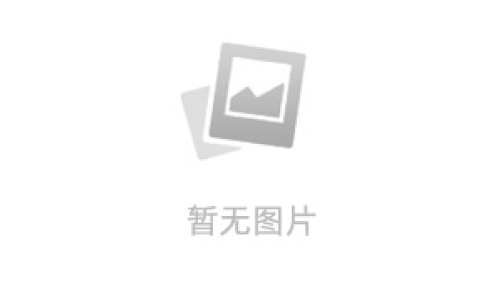【元宵节的由来英文介绍】
The 15th day of the 1st lunar month is the Chinese Lantern Festival because the first lunar month is called yuan-month and in the ancient times people called night Xiao. The 15th day is the first night to see a full moon. So the day is also called Yuan Xiao Festival in China.
According to the Chinese tradition, at the very beginning of a new year, when there is a bright full moon hanging in the sky, there should be thousands of colorful lanterns hung out for people to appreciate. At this time, people will try to solve the puzzles on the lanterns and eat yuanxiao (glutinous rice ball) and get all their families united in the joyful atmosphere.
元宵节正月十五吃元宵的的习俗由来已久,元宵也叫“汤圆”、“圆子”。据说元宵象征合家团圆,吃元宵意味新的一年合家幸福、万事如意。
元宵节闹花灯的习俗起源于道教的“三元说”;正月十五日为上元节,七月十五日为中元节,十月十五日为下元节。主管上、中、下三元的分别为天、地、人三官,天官喜乐,故上元节要燃灯。元宵节的节期与节俗活动,是随历史的发展而延长、扩展的。就节期长短而言,汉代才一天,到唐代已为三天,宋代则长达五天,明代更是自初八点灯,一直到正月十七的夜里才落灯,整整十天。与春节相接,白昼为市,热闹非凡,夜间燃灯,蔚为壮观。特别是那精巧、多彩的灯火,更使其成为春节期间娱乐活动的高潮。至清代,又增加了舞龙、舞狮、跑旱船、踩高跷、扭秧歌等“百戏”内容,只是节期缩短为四到五天。
History
Until the Sui Dynasty in the sixth century, Emperor Yangdi invited envoys from other countries to China to see the colorful lighted lanterns and enjoy the gala(节日的,庆祝的)performances.
By the beginning of the Tang Dynasty in the seventh century, the lantern displays would last three days. The emperor also lifted the curfew(宵禁令), allowing the people to enjoy the festive lanterns day and night. It is not difficult to find Chinese poems which describe this happy scene.
In the Song Dynasty, the festival was celebrated for five days and the activities began to spread to many of the big cities in China. Colorful glass and even jade were used to make lanterns, with figures from folk tales painted on the lanterns.
However, the largest Lantern Festival celebration took place in the early part of the 15th century. The festivities continued for ten days. Emperor Chengzu had the downtown area set aside as a center for displaying the lanterns. Even today, there is a place in Beijing called Dengshikou. In Chinese, Deng means lantern and Shi is market. The area became a market where lanterns were sold during the day. In the evening, the local people would go there to see the beautiful lighted lanterns on display.
Today, the displaying of lanterns is still a big event on the 15th day of the first lunar month throughout China. People enjoy the brightly lit night. Chengdu in Southwest China's Sichuan Province, for example, holds a lantern fair each year in the Cultural Park. During the Lantern Festival, the park is literally an ocean of lanterns! Many new designs attract countless visitors. The most eye-catching lantern is the Dragon Pole. This is a lantern in the shape of a golden dragon, spiraling up a 27-meter -high pole, spewing fireworks from its mouth. It is quite an impressive sight!
元宵节是中国的传统节日,早在2000多年前的西汉就有了,元宵赏灯始于东汉明帝时期,明帝提倡佛教,听说佛教有正月十五日僧人观佛舍利,点灯敬佛的做法,就命令这一天夜晚在皇宫和寺庙里点灯敬佛,令士族庶民都挂灯。以后这种佛教礼仪节日逐渐形成民间盛大的节日。该节经历了由宫廷到民间,由中原到全国的发展过程。
在汉文帝时,已下令将正月十五定为元宵节。汉武帝时,“太一神”的祭祀活动定在正月十五。(太一:主宰宇宙一切之神)。司马迁创建“太初历”时,就已将元宵节确定为重大节日。
另有一说是元宵燃灯的习俗起源于道教的“三元说”;正月十五日为上元节,七月十五日为中元节,十月十五日为下元节。主管上、中、下三元的分别为天、地、人三官,天官喜乐,故上元节要燃灯。
元宵节的节期与节俗活动,是随历史的发展而延长、扩展的。就节期长短而言,汉代才一天,到唐代已为三天,宋代则长达五天,明代更是自初八点灯,一直到正月十七的夜里才落灯,整整十天。与春节相接,白昼为市,热闹非凡,夜间燃灯,蔚为壮观。特别是那精巧、多彩的灯火,更使其成为春节期间娱乐活动的高潮。至清代,又增加了舞龙、舞狮、跑旱船、踩高跷、扭秧歌等“百戏”内容,只是节期缩短为四到五天。
郑重声明:本站所有内容均来自互联网,旨在传播更多的信息,版权为原作者所有。若有不合适的地方,请联系本站删除,邮箱:599385753@qq.com。
上一篇:love”为“零蛋”
下一篇:英语中24个爆笑离奇的怪词











